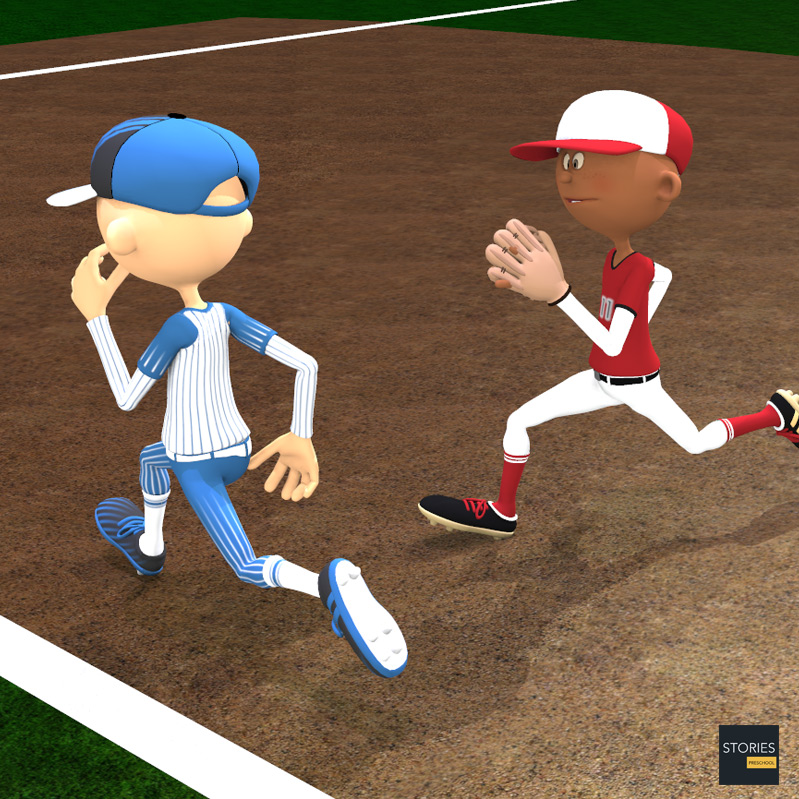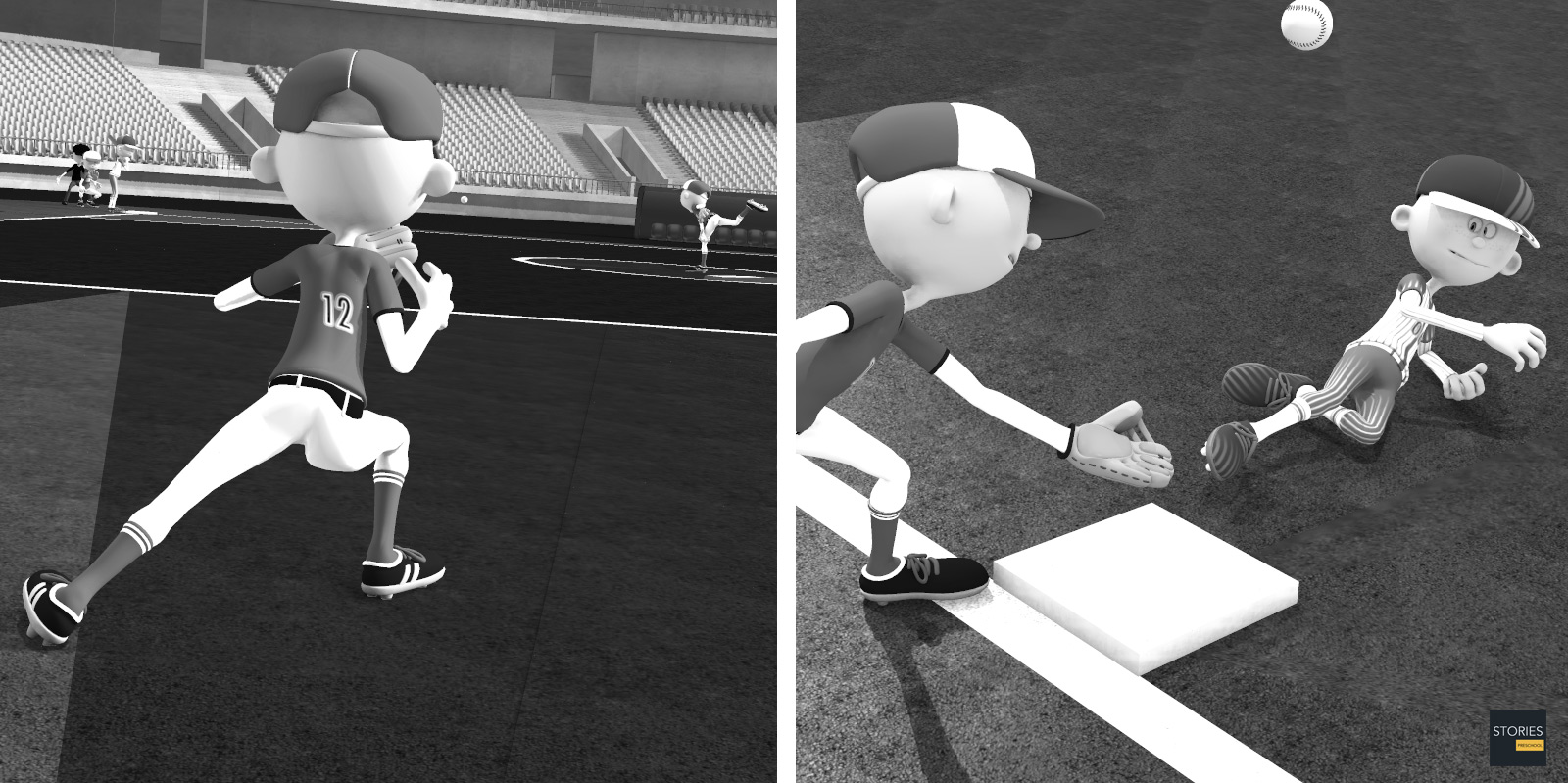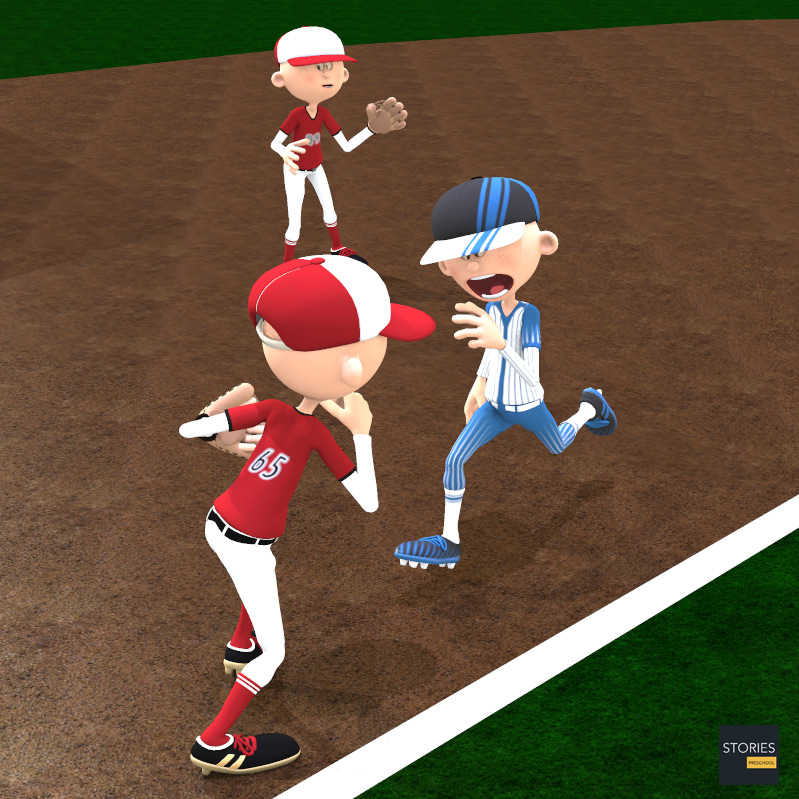Baseball

Tag Out
In baseball, a tag out, sometimes just called a tag, is a play in which a baserunner is out because he is touched by the fielder who is holding a live ball either in hand or glove while the runner is advancing.

In baseball, a runner must sometimes advance to the next base because a batter, advancing to first, forces that runner to advance ahead of him to the next base. Two runners are not allowed on one base at one time, so a batter can, in effect, bumper-car a runner forward. Such a runner is spoken of as having been forced to the next base. A defensive play against that runner is called a force play and, if successful, a force out. In force plays, the way a fielder gets a runner out is by, with the ball in his hand, simply touching or stepping on the targeted base before the runner does.
A batter can also advance to the next base because he chooses to. For example, suppose, with a runner on first, the batter hits a single into the outfield. As the batter runs to first, the runner on first is forced to advance ahead of him to second. However, that runner can then choose to run past second and on to third. In this situation, a defensive play against such an unforced runner will be called a tag play and, if successful, a tag out. To get the runner out on a tag play, the fielder must tag him with the ball before the runner gets to the targeted base. Tag plays are much more difficult to execute than force plays.
Tag plays can also be utilized in other cases when the runner is in jeopardy. A baserunner is in jeopardy when:
- he is not touching a base (other than after overrunning first base or when advancing to an awarded base, such as on a base on balls);
- he is touching a base he has been forced to vacate because the batter became a baserunner (a forced runner)
- he has not tagged up on a caught fly ball;
- he failed to touch a base when he last passed it, or to touch them in order; or
- he is touching a base that a preceding baserunner is also touching, except when forced to vacate the previous base because the batter became a baserunner

A tag is the most common way to retire baserunners who are not in danger of being forced out, but a tag can put runners out on a force or a non-force play, as well as on an appeal play. Runners attempting to advance are sometimes thrown out, which means that a fielder throws the ball to someone covering the base, who then tags the runner before the runner touches the base. A runner who leads off a base too far might be picked off; that is, the pitcher throws to a fielder covering the base, who then tags the runner out.
When a runner is tagged out, a farther advanced runner who had been forced to advance no longer has to do so. For example, when a sharply hit ball is caught on one hop by the first baseman, he might immediately tag out the runner at first who is forced to advance to second; but when this is done a runner already at second is no longer forced to advance to third base. The result of such a tag is called "removing the force".
If a defensive player tags the runner with his glove and the baseball is in his other hand, or with his free hand while the baseball is in his glove, then the runner is not out. Attempted tag outs sometimes can instigate fights in baseball. Often the infielder will tag the baserunner too hard, or the baserunner will slide into base with enough speed and force to knock over the infielder attempting to tag out. Additionally, the runner may run the infielder over in an attempt to make the fielder drop the ball.

SPORTS

RESOURCES
This article uses material from the Wikipedia articles "Baseball" and "Tag out", which is released under the Creative Commons Attribution-Share-Alike License 3.0.
© Stories Preschool. All Rights Reserved.












